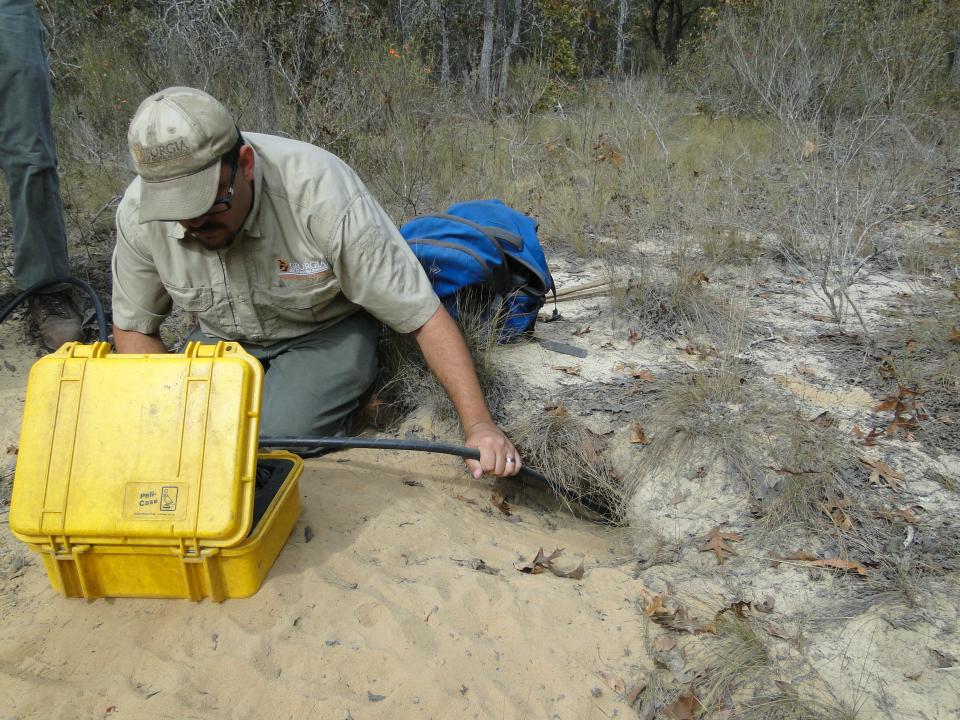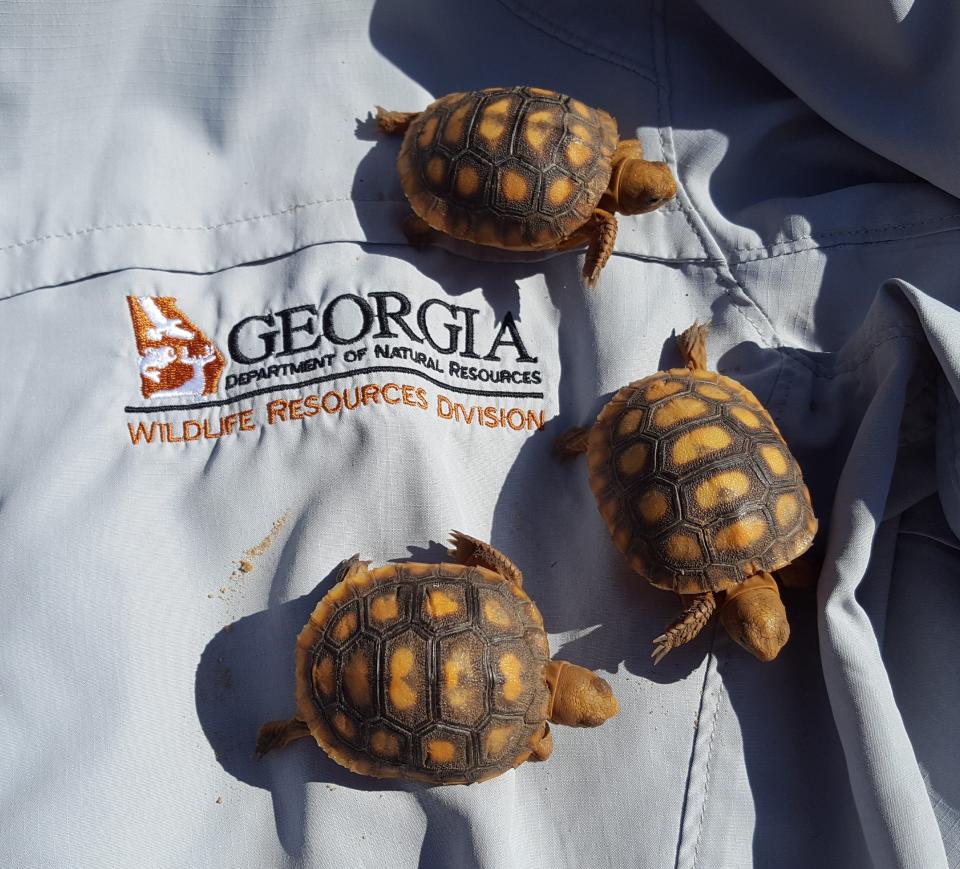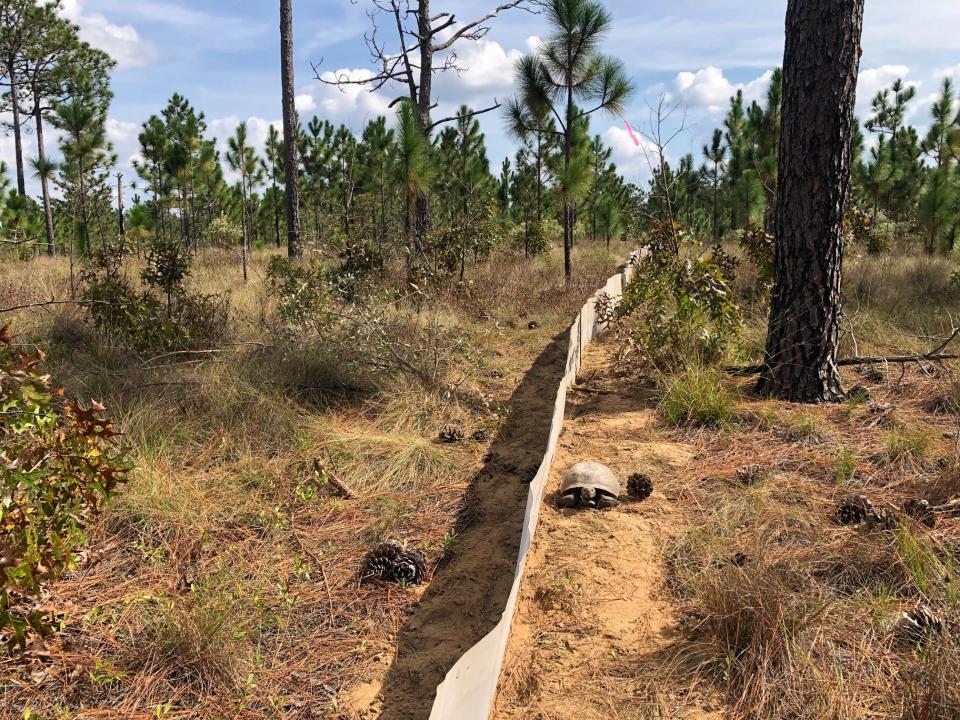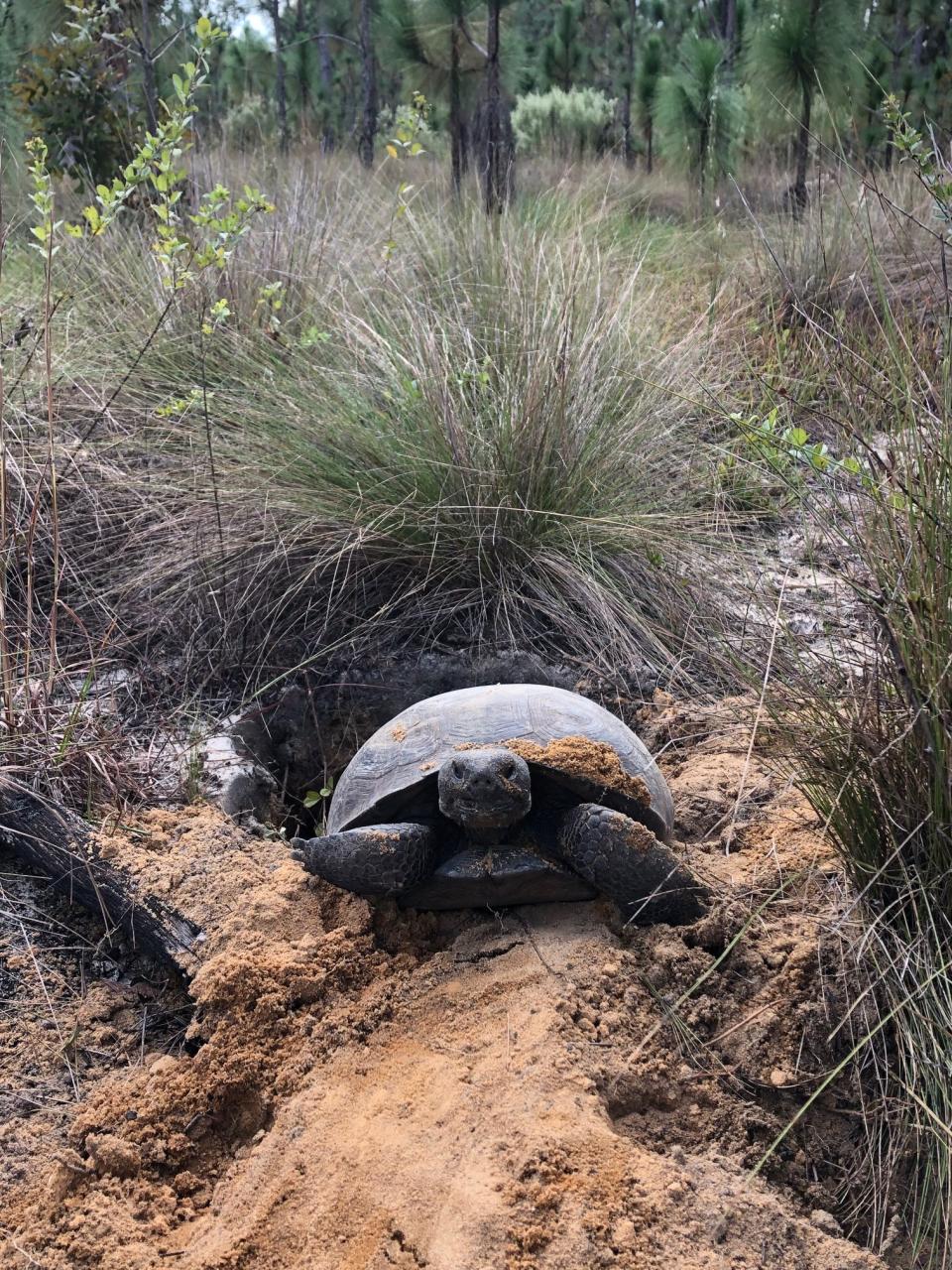Georgia gopher tortoises skirt endangered status citing steady conservation
Georgia's gopher tortoises – big, lumbering reptiles known for the burrows they dig in sandy soil – recently were passed up for listing as endangered under the federal Endangered Species Act.
The U.S. Fish and Wildlife Service, which decides which critters make the endangered list, this month decided that gopher tortoises east of Alabama's Tombigbee and Mobile rivers have "robust" populations and are no longer candidates for the federally protected status.
Turtles thriving: Georgia's record breaking sea turtle nesting season winds to a close
Hog wild: Even with development looming, feral swine likely here to stay in Georgetown
The hefty reptiles, which can grow well over 10 pounds, are found in coastal plains stretching from eastern Louisiana to western South Carolina and southern Florida, and USFWS said that the western population in Louisiana, Mississippi and western Alabama is still being considered for endangered status.
The gopher tortoises' status in Georgia won't change, but the decision will be discussed in a virtual public meeting with USFWS at 7 p.m. Dec. 13 to gather more public input.

More tortoises than expected
"There were more tortoises out there than they were sort of giving us credit for," said Matt Elliott, assistant chief of wildlife conservation with the Georgia DNR's Wildlife Resource Division. "We do have a lot of populations that weren't mentioned in initial review."
Elliott said the process for a species to be listed as federally endangered is rigorous, and during the investigation they found populations in Georgia were stronger than previously thought. While the gopher tortoises in Georgia won't receive increased federal protections, Elliot said the USFWS is still emphasizing the need for continued protection and conservation.

Keystone species
Beyond maintaining the species population for its own sake, Elliott said that gopher tortoise conservation is important because they fill an important ecological niche as a keystone species because the burrows they dig help house around 300 other species, like frogs and toads, skunks, occasional litters of fox or coyote pups and the endangered eastern indigo snake. One time, Elliott said, the DNR even found an otter inside a gopher tortoise burrow.
Elliott said DNR was part of a larger group called Georgia’s Gopher Tortoise Conservation Initiative, which brought together wide-ranging organizations, from the Georgia Conservancy to the Georgia Department of Transportation, to strategically conserve lands, work with private landowners, conduct populations surveys and more.

Previous decline, long-term conservation
"A lot of the (population) decline is historic. There's been a lot of habitat loss going back a while," Elliott said. Uplands converted to agriculture and encroaching human development shrunk the gopher tortoises' territory, but Elliott said that conservation and monitoring on state lands has seen Georgia's population of gopher tortoise remain steady in recent years.
The University of Georgia's Savannah River Ecology Lab, located across the border from Augusta in Aiken, SC, has been conducting one of the efforts to conserve gopher tortoises on the coastal plain. Tracey Tuberville, a senior research scientist at SREL, said the lab has been working to relocate tortoises to successful habitats to promote conservation since 1995.

"There was actually a lot of resistance to the idea of doing what I call 'translocation,'" Tuberville said.
Many were critical of taking turtles from a location slated for development and moving them elsewhere because it seemed like developers were getting a get-out-of-jail free card to do whatever they wanted with the gopher tortoises' habitat. But Tuberville said that moving threatened tortoises to places that historically had thriving tortoise populations in the Savannah River region, but don't anymore, has proven successful.
She has worked mostly with reproduction, trying to grow existing populations of tortoises. Like Elliott, she agreed that development is the biggest threat to gopher tortoises, but she said people also need to consider habitat degradation: The land might still be there for tortoises to live on, but if a road is built close by or if the leafy understory isn't available anymore, it can dampen population growth.
Digging for bones: Ancient bison bones dug up in Georgia unveil climate conditions from 50,000 years ago
Throwing out the trash: Less trash on the beach? How Tybee Island's anti-litter efforts have resulted in cleaner sands
One method Tuberville said SREL has found success with is soft-release pens, where transplanted tortoises can be kept in the wild, but in an enclosed fence, to get used to their surroundings. The tortoises set up their "home ranges" and are less likely to leave the release area, an established and protected area designated for conservation.
Gopher tortoises are social animals, Tuberville said. They like to live in little colonies, and visit each other's burrows. Releasing them into conservation lands not only gives tortoises the best chance at survival, but helps rebuild the social connections that will make gopher tortoise populations stronger in the future.
Marisa Mecke is an environmental journalist. She can be reached at mmecke@gannett.com or by phone at (912) 328-4411.
This article originally appeared on Savannah Morning News: Georgia gopher tortoises skirt endangered status citing conservation
